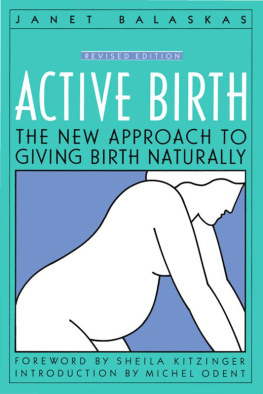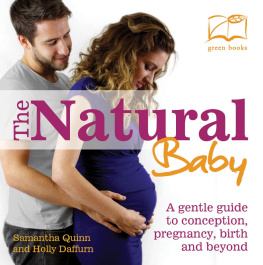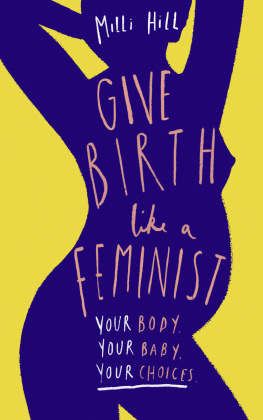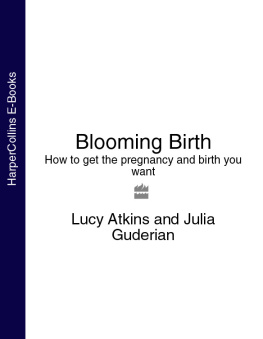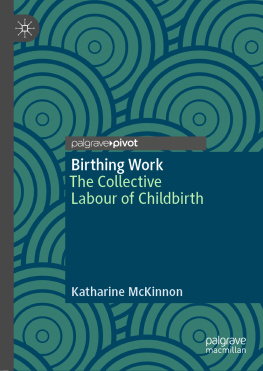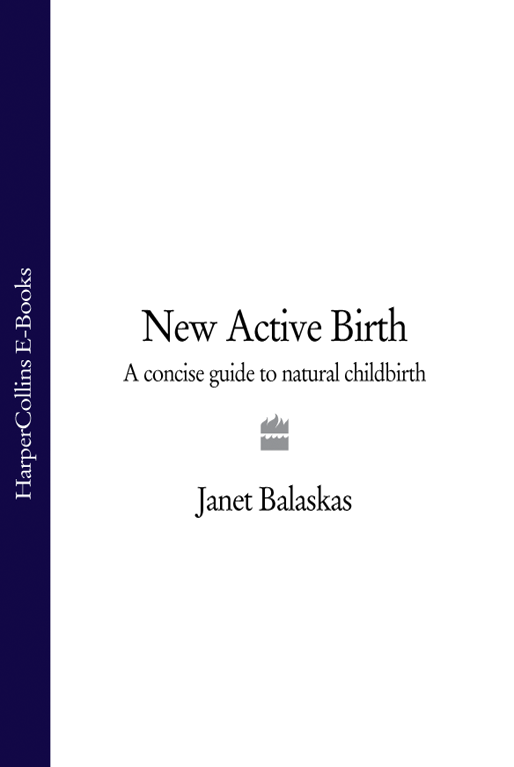New Active Birth
A concise guide to natural childbirth
JANET BALASKAS
Foreword by Sheila Kitzinger
Introduction by Michel Odent

An Imprint of HarperCollinsPublishers
Contents
My first daughter, Nina, was born in 1970. I attended preparation classes and was hoping for a natural birth. I was active until strong labour began and then I lay passively in bed, semi-reclining, for the last three hours. Fortunately there were no complications and I managed, with enormous effort and the help of an unnecessary episiotomy, to give birth to her spontaneously.
I discovered active childbirth during the birth of my second daughter, Kim. During this pregnancy I had taken up yoga and enjoyed practising the yoga postures, finding some of them particularly beneficial as the pregnancy advanced. A study of the history of childbirth revealed how some of the yoga postures, especially squatting, had been used throughout the ages as birth positions. An anatomical study of the female pelvis clarified that these postures relaxed and opened the pelvic canal and were ideal movements to adopt when trying to evacuate its contents.
Consequently, when it came to labour, I began by following the usual instructions given in antenatal classes and made myself comfortable in the semi-reclining position, focusing on some breathing techniques. Progress was slow and while the breathing techniques kept me calm and centred, they seemed to distract me from the labour. Eventually I decided to get up and try some of the positions I had practised during pregnancy. The change in progress was dramatic and it dawned on me, for the first time, that it is necessary for a woman to move and to be in harmony with gravity in order to help her body to open up in labour. I realised then, that squatting, and its variations, is the logical position for any woman to adopt while giving birth and is the most important position to practise during pregnancy. I resolved there and then to improve my squatting before my next labour.
During my son Iasonass birth I kept active; walking, squatting and kneeling, and gave birth to him on all-fours. It was a marvellous experience. I had an entirely new sense of control and knew instinctively what to do. I was up within hours of the birth and felt none of the aches and pains I had for a week or two after my previous births, despite the fact that he was almost a 10lb baby. I was astonished how fit and well I felt after the birth, and suffered no exhaustion or depression in the following months.
Recently, number four was born, also at home. Theo weighed in at 11lbs and this time I had a portable water birth pool designed by my husband Keith, in our bedroom. Labour was intense and as soon as I reached 5cms dilation I entered the pool. The buoyancy of the water made it much easier for me to relax. I was encouraged to let myself go without any inhibitions, and I remember making a tremendous amount of noise and reaching full dilation very quickly.
Michel Odent, who was in attendance, suggested that I leave the pool for the actual birth. Given Theos size, we decided that I needed the help of gravity to get him born, so I used the supported standing squat position. He was born in two contractions despite his size, miraculously without a tear. The medical establishment would certainly have considered me high risk. I was 42, rhesus negative and had surgery on the uterus 3 years previously. These were the very reasons that I wanted to stay at home where conditions for a normal birth were optimal.
My own birth experiences are not unusual. Since 1978 I have been teaching yoga to pregnant women and more than 80 per cent of them have succeeded in giving birth naturally and actively to their babies. Most of them had no previous experience of yoga and their ages have ranged from 19 to 49. It has been a joy to observe how readily their bodies responded to the yoga. As their flexibility improved, their health and happiness increased. At the end of pregnancy most of them were in touch with their birthing and motherly instincts and could approach the birth with confidence. The experiences of these women have added to my personal conviction and won support from their midwives, doctors and obstetricians.
Many women enjoy the benefits of yoga so much that they are back in the mother and baby exercise sessions two to three weeks after birth. This is so, not only in the case of the mother who has a normal, problem-free birth, but also for those who have needed the help of forceps or Caesarean section.
Over the years I have seen that active labour and the adoption of natural, upright or crouching birth positions is the safest, most enjoyable, most economical and sensible way for the majority of women to give birth. There is no disruption of the normal physiology of labour, no interference with the hormonal balance, postnatal depression is rare and problems with breastfeeding and mothering are less likely.
The majority of labours managed well should be uncomplicated. No special equipment is needed and the birth can take place in the simplest environment or in the most sophisticated hospital delivery room.
Active Birth is natural and instinctive. Left to her own devices it is the way a woman will behave during labour. In preparing a woman for an active birth, my aim is to help her get in touch with her own birth-giving instinct.
Giving birth is essentially a natural bodily function, which occurs quite spontaneously and involuntarily at the end of pregnancy. It is part of a continuous evolution which begins with love-making and conception and ends in the growing independence of the child from his mother, during the first few years of life. The whole process of conceiving a baby, being pregnant, giving birth and mothering is part of the sexual and spiritual life of a woman, and is basically rooted in the natural and undisturbed unfolding of a series of physiological events.
The best way in which a woman, entering into motherhood, can prepare herself is from her own body.
The yoga exercises I recommend are not unnatural movements imposed upon the body. On the contrary, they are instinctive and simple movements we could all make with ease. It is a kind of physical remembering rather than a system of exercise. In fact, many of the exercises in this book came from my observations of the movements made by my children when they were very young. By watching them, I realised how stiff, as adults, we have become; how we have lost contact with the range of movement nature intended us to have. A toddler will squat with ease for a long time, feet flat on the ground, back straight and rising up from this position when he learns to walk.
It is well known that the more civilised we become the more we forget our natural habits. Today we are able to ensure a reliable medical back-up for all women in the event of complications and the mortality rate has improved by the life-saving techniques of modern obstetrics. However, I have seen all too often in my practice, how the widespread use of routine obstetric technology, inappropriately applied to normal labour, disturbs the natural birth process and causes many of the problems it was designed to prevent. In some hospitals, birth has become an abdominal or vaginal extraction conducted on a conveyor belt. The result is that most women are completely out of touch with their own instinctive ability to give birth, and midwives are losing their intuitive skills as they depend more on technology. Many women have never seen a birth or even held a baby by the time they enter motherhood. The natural skills of giving birth and mothering are no longer handed down from woman to woman, generation to generation.


